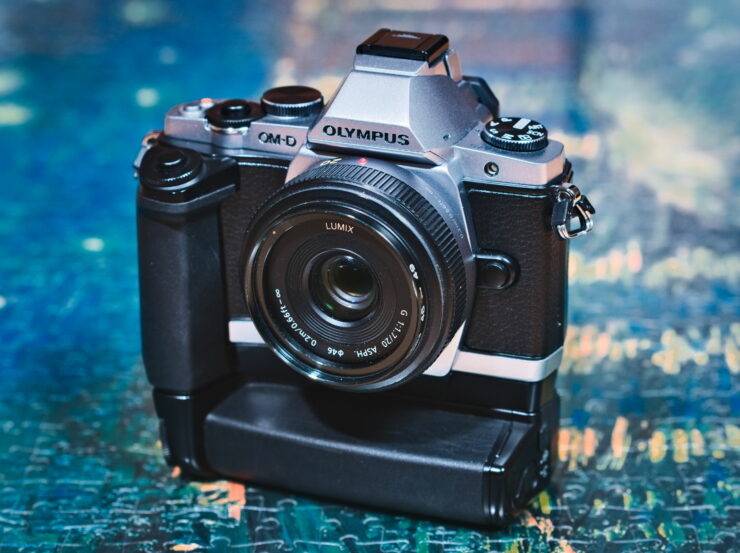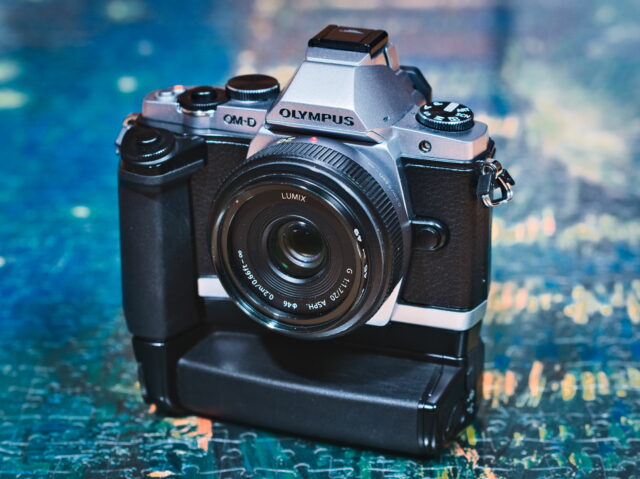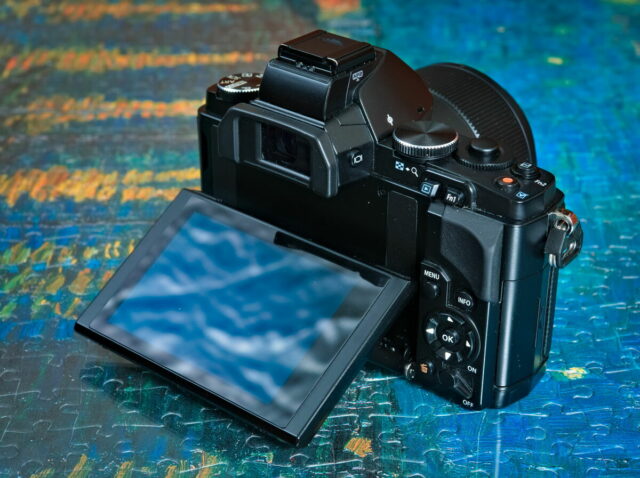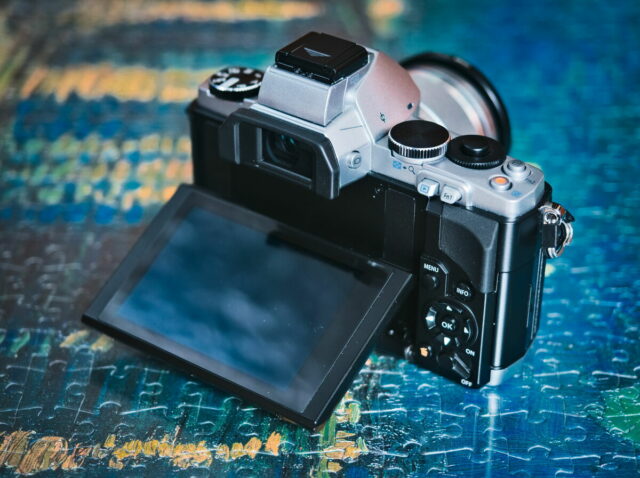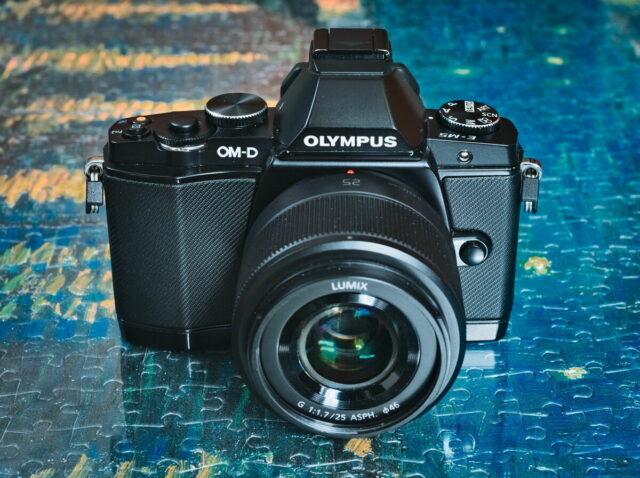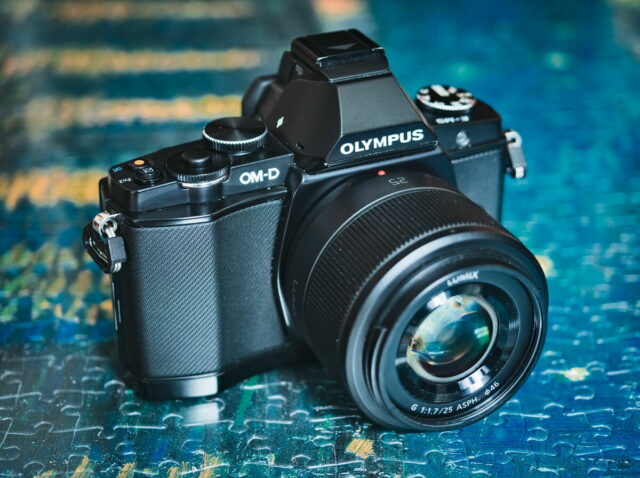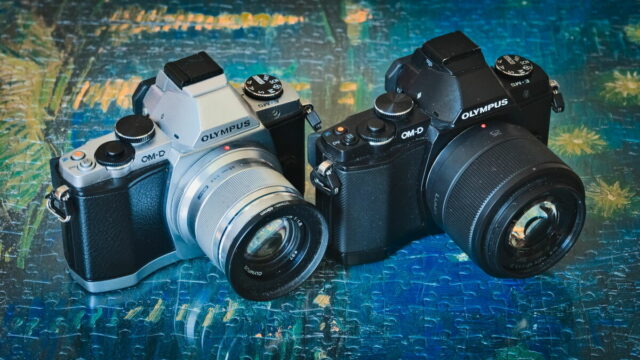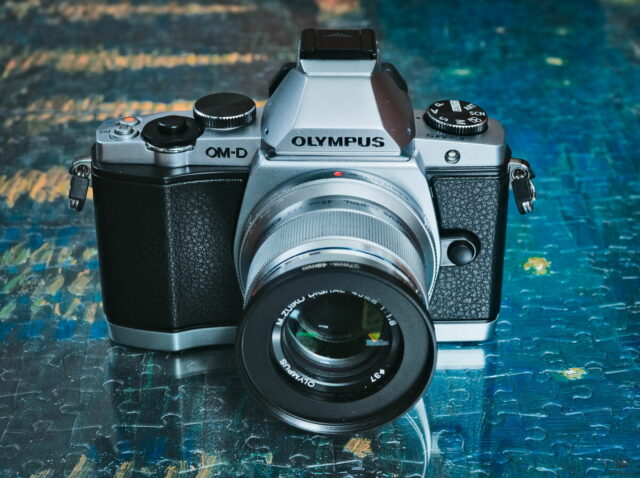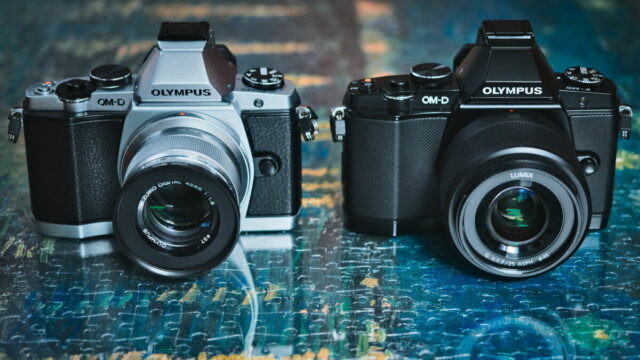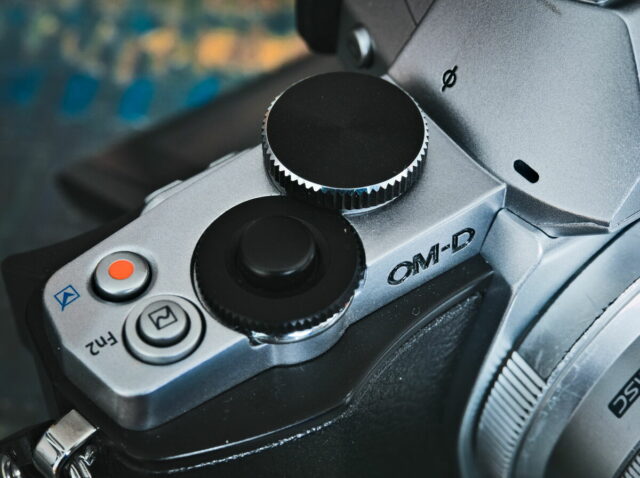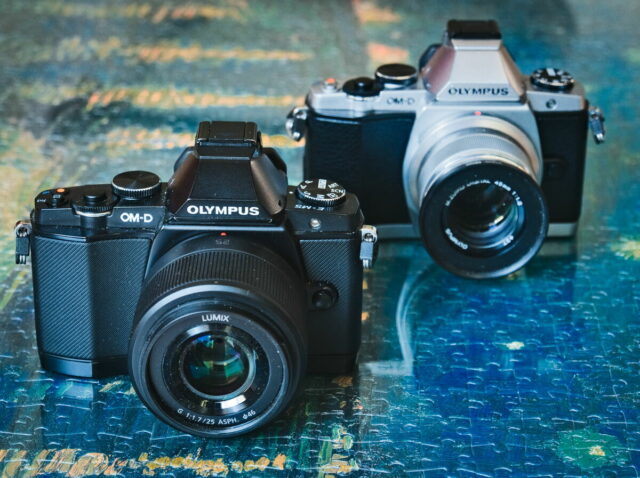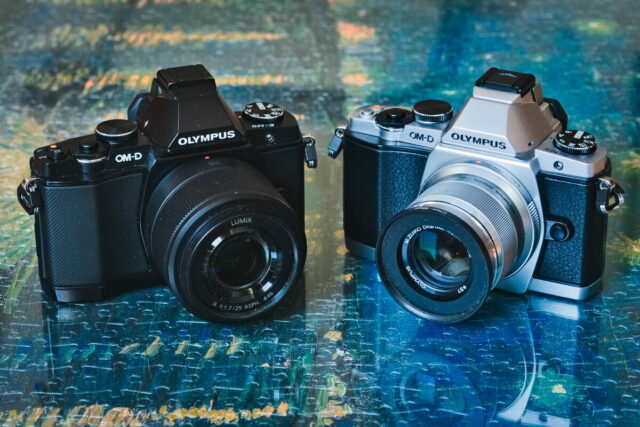I recently got two Olympus OM-D E-M5 bodies. As a hobby photog reason enough to write a blog post about this camera. I want to show my experience on how the E-M5 performs in 2020. How does the camera feel compared to newer models? Is the image quality still good or far behind the newer competition? Can I recommend the E-M5 camera in 2020?
To make the answer short, if you are on a budget and look into serious photography, don’t look further, get a 2nd hand OM-D E-M5 body and a small prime lens like the 20/1.7 or 25/1.7 or 1.8 from Panasonic or Olympus and you are ready to start your journey. But hey, you can of course go on reading if you want to get to know the reasons. 🙂
My two E-M5 bodies, one in black and the other in silver, were really cheap, in nearly mint condition with a very low shutter count. They compliment my OM-D E-M1 and E-M1 Mark II perfectly. The E-M5 is smaller and has more of that really nice retro style. Its light weight and classic charme makes it fun to take on photo walks, especially in combination with small prime lenses. In addition I have got a battery grip HLD-6 which adds size and weight but gives me also better handling and ergonomics if I want to.
When the Olympus OM-D E-M5 was launched in 2012, it represented the first serious Micro Four Thirds camera from Olympus. It created a huge buzz among the photographic community, more than any other M4/3 camera before. The camera was a game changer for Olympus and many Micro Four Third enthusiasts.
In 2012 the Dpreview community chose the Olympus E-M5 in a user poll as the best camera of the year 2012. Dpreview is one of the top photography websites in the internet with a very large photo centric community. The E-M5 won over cameras like the Nikon D800 and Canon EOS 5D Mark III.
Even today you can feel why this camera was one of the most successful cameras in the history of Olympus. It’s qualities were the reason to purchase this camera again after having it already owned for a while a few years ago.
What are the points that make this camera so special?
- Classic look with a vintage factor. Taking photographs with a nice looking camera makes even more fun.
- In 2012 a new 16 megapixel image sensor that raised Micro Four Thirds in terms of image quality at least to the level of the best APS-C cameras at the time.
- A robust construction made of metal with a very nice feel
- The newly introduced 5-axis image stabilizer. Free hand recordings with 1/8 seconds were now possible. In combination with a bright prime lens, the E-M5 is really low-light capable. Full HD video is perfectly stabilized.
- One of the best electronical viewfinders ind 2012. It was the first Olympus camera, that came with an electronical viewfinder build in.
- High ISO capabilities greatly improved over the older 12 megapixel M4/3 cameras. ISO 1600 – 3200 became usable with M4/3 with good picture quality and manageable image noise. Here the E-M5 caught up with the best APS-C cameras.
- Greatly improved dynamic range. For high-contrast subjects, highlights and shadow areas can be very nicely recovered in the camera’s RAW files. The files offer excellent post-processing capabilities
- The camera can be operated very easily and quickly via the touchscreen, the super control menu and the twin dials. It can be configured infinitely according to your own wishes
- The auto-focus in S-AF mode was one of the fastest in 2012 and is still very fast today. The camera responds to all inputs very quickly and without any pausing.
- Lightweight, perfect for travel and documentation
Why is it still a relevant camera even in 2020?
- 16 megapixels are still current even compared to today’s M4/3 cameras. The newer 20 megapixel sensor in the M4/3 cameras, e.g. OM-D E-M1 Mark III only offers slight improvements that are not very relevant in reality. If you want to know, how big 16 Megapixel of this camera can print, watch this videos -> https://youtu.be/sZ1oJdGxUkY or https://youtu.be/1oQbT4ixMtI
- From my own experience I have prints on canvas 120cm x 80cm (47 x 31 Inches). They are super sharp even cropped to 3:2 which is only 12 megapixel of the sensor area. Image quality is top notch and you could go even bigger with printing.
- If you shoot in RAW, picture quality is very similar to today’s M4/3 cameras
- The image stabilizer is as good as it was in 2012. The newer Olympus and Panasonic models offer even improved 5-axis image stabilizers, but the stabilizer of the E-M5 is still a wonderful piece of technology and extremely useful for static motives in poor light or for video recordings in Full-HD
- It still looks just as good as it did in 2012 and also feels very valuable. While Olympus switches to plastic housings for the newer cameras of the E-M5 and E-M10 series, the first E-M5 has a robust full metal housing
- The current video hype is 4K, correspondingly, current cameras offer 4K video. If you don’t film professionally, Full-HD Video quality of the E-M5 might be most of the time sufficient, especially in conjunction with the image stabilizer. Full-HD still has its right to exist because it is not as memory-intensive as 4K and can be edited more easily on your PC. Besides from a normal viewing distance on TV or smartphone 4K and Full-HD recordings are not really distinguishable between each other.
- Newer cameras offer additional shooting modes such as Focus stacking, HDR free hand, High-res mode or night shot modes for light trails and star trails. You pay the premium price for it, if you need or want it. The actual image quality has not undergone any major advances and personally I mostly shoot in PASM mode.
- Electronical viewfinder and touchscreen display are still very good and a joy to use.
As you can see from the list above, I still really enjoy using the E-M5. You can’t go wrong with an used E-M5 even in 2020. It is cheap, fun to use, has nice features and still produces very good images. As a former flagship camera you can enjoy its qualities even in 2020 without breaking the bank. In the end, you just have to decide whether you want it in black or silver. Photography doesn’t have to be expensive and not always you need the latest and greatest to produce nice images.
